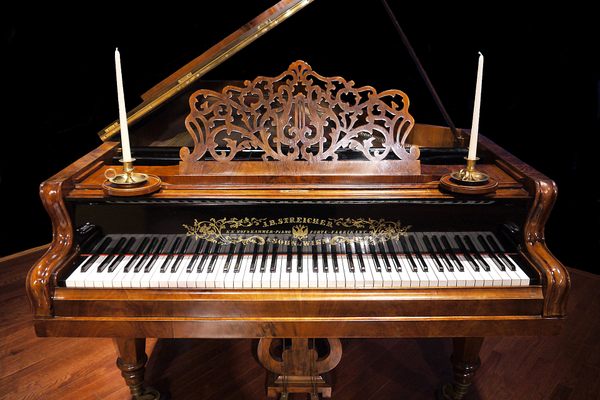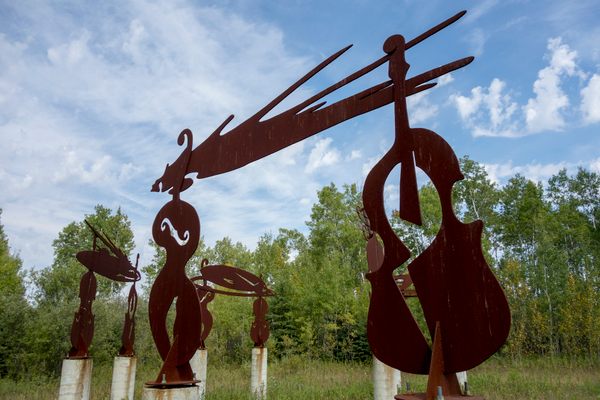50 States of Wonder
8 Places to Get Musical in Minnesota
Two 20th-century musical figures tower over the state of Minnesota: Prince Rogers Nelson and Robert Allen Zimmerman. (That's Prince and Dylan to us mere mortals.) And while the Gopher State definitely celebrates its favorite musical sons, much of the state has a musical bent to it, from a singing beach to a room so devoid of sound is makes a musical madness all its own.
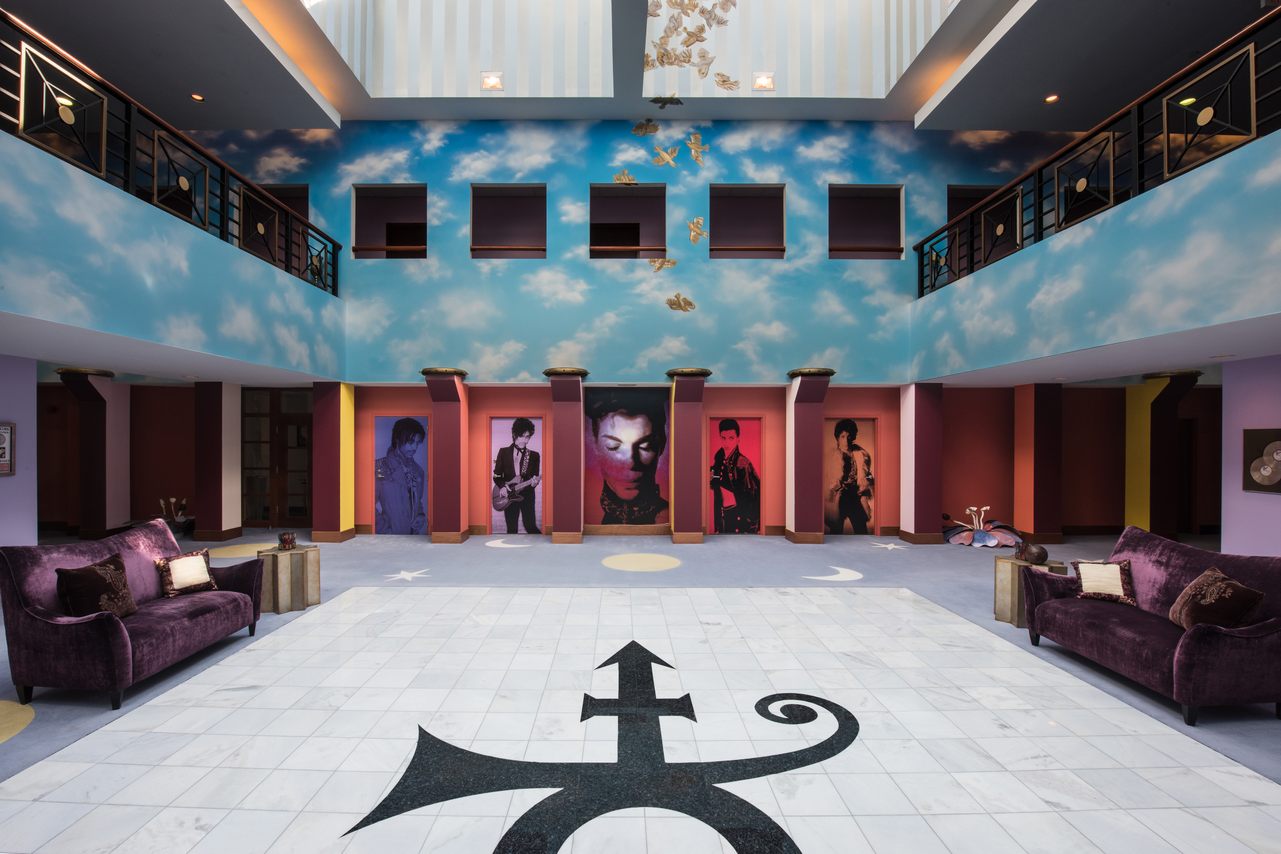
1. Paisley Park
Prince had a huge musical catalogue, and an expansive home-cum-studio: Paisley Park. The 65,000-square-foot building in Chanhassen was opened to the public as a museum shortly after the multi-instrumentalist and singer's untimely death in 2016, and features displays of instruments, artwork, motorcycles, and rare recordings. And, oh yeah, the actual sounds of doves crying. (Read more.)
7801 Audubon Rd, Chanhassen, MN 55317

2. Schubert Club Museum of Musical Instruments
On the second floor of the Landmark Center in Saint Paul, historic keyboards and other instruments spanning across centuries, styles, and the globe fill an entire gallery. The Schubert Club Museum of Musical Instruments is a must-see for anyone interested in music history, and there's something there for all the senses. Visitors can play some of the keyboards on display, and phonographs and music boxes from the early 20th century offer an acoustic tour of the past. There’s also an “Innovation Station” where you can tinker with a variety of homemade instruments made from an assortment of unconventional items. (Read more.)
75 W 5th St, St Paul, MN 55102

3. The Times They Are A-Changin'
This magnificent mural in Minneapolis shows the musical icon Bob Dylan during three stages of his life: as a young troubadour, a bit older, and then as an elder statesman in what’s now considered his trademark hat. Some speculate the work also gives a possible nod to the acoustic versus electric guitar controversy, when his switch to rock was met by outrage from fans of his more folk-oriented work. The eye-catching mural is the work of renowned Brazilian street artist Eduardo Kobra. (Read more.)
15 S 5th St, Minneapolis, MN 55402
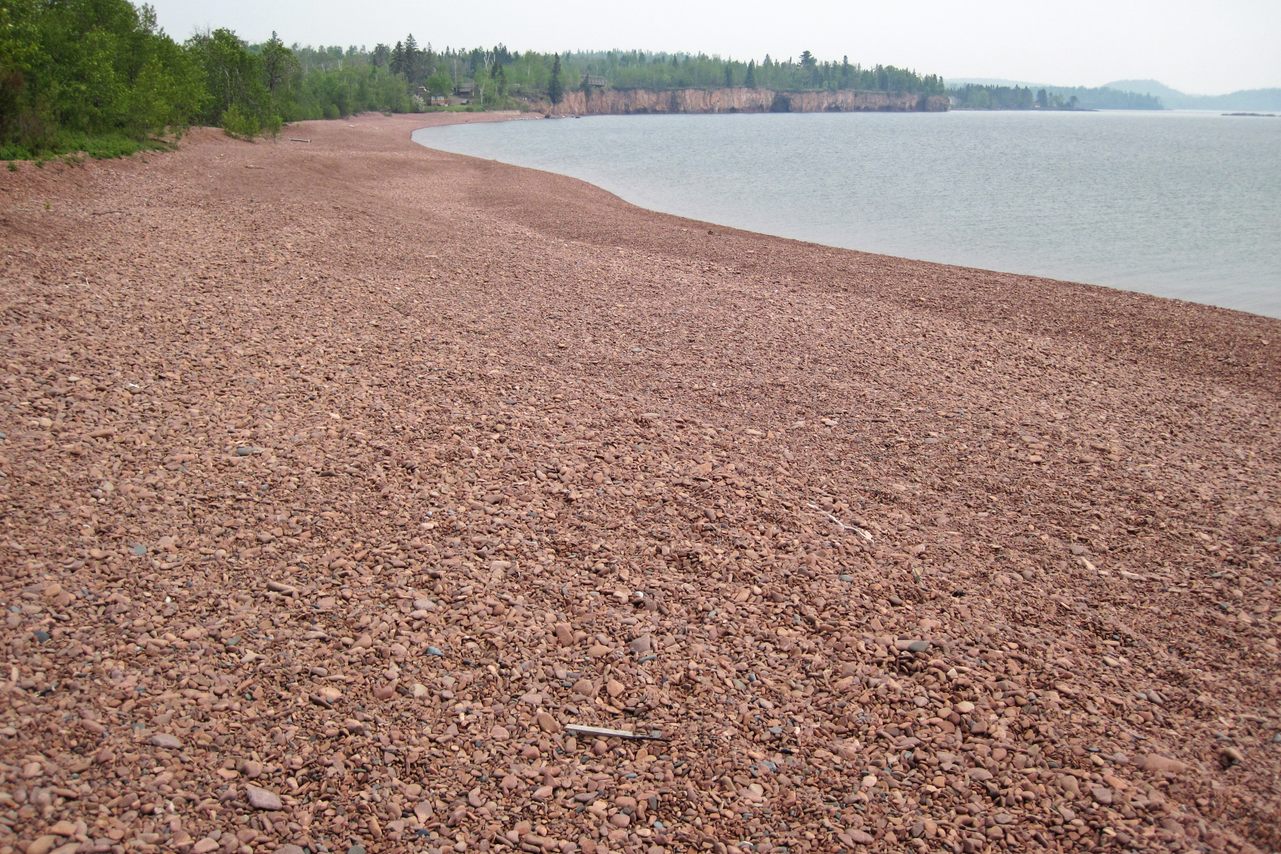
4. Iona's Beach
Iona's Beach is a hidden gem where, instead of silky, golden sand, there are smooth, pink rocks—and if you listen at the right moment, they sing. As waves roll in and the stones resettle, they tinkle softly like millions of little bells. (Read more.)
MN 55616
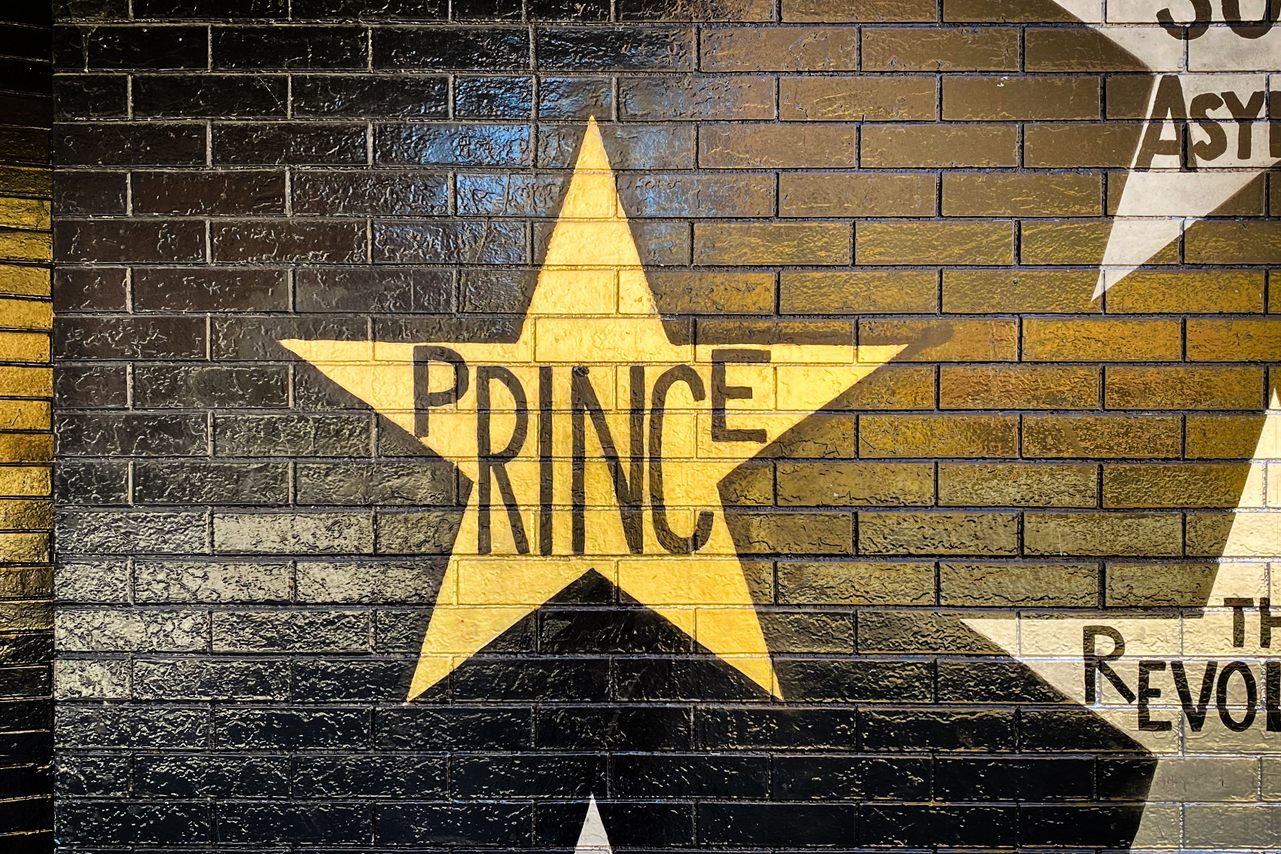
5. Prince's Star at First Avenue
The iconic Minneapolis concert venue First Avenue has hosted thousands of musical artists since its opening in 1970, but none is more profoundly intertwined with the club's legacy than Prince. The venue was called Sam’s when he first took the stage on March 9, 1981. Within a couple years, the Purple One was a worldwide celebrity. Prince loved the club so much that he bought out the main room for a month to shoot Purple Rain, which cemented the club’s fame. After the film’s release, the club—then called First Avenue—painted its black exterior walls with bright, silver stars commemorating key artists who had played there. Prince’s star went up near the main entrance. After Prince’s death in 2016, a mystery emerged: Who painted Prince’s First Avenue star gold? (Read more.)
701 N 1st Ave, Minneapolis, MN 55403
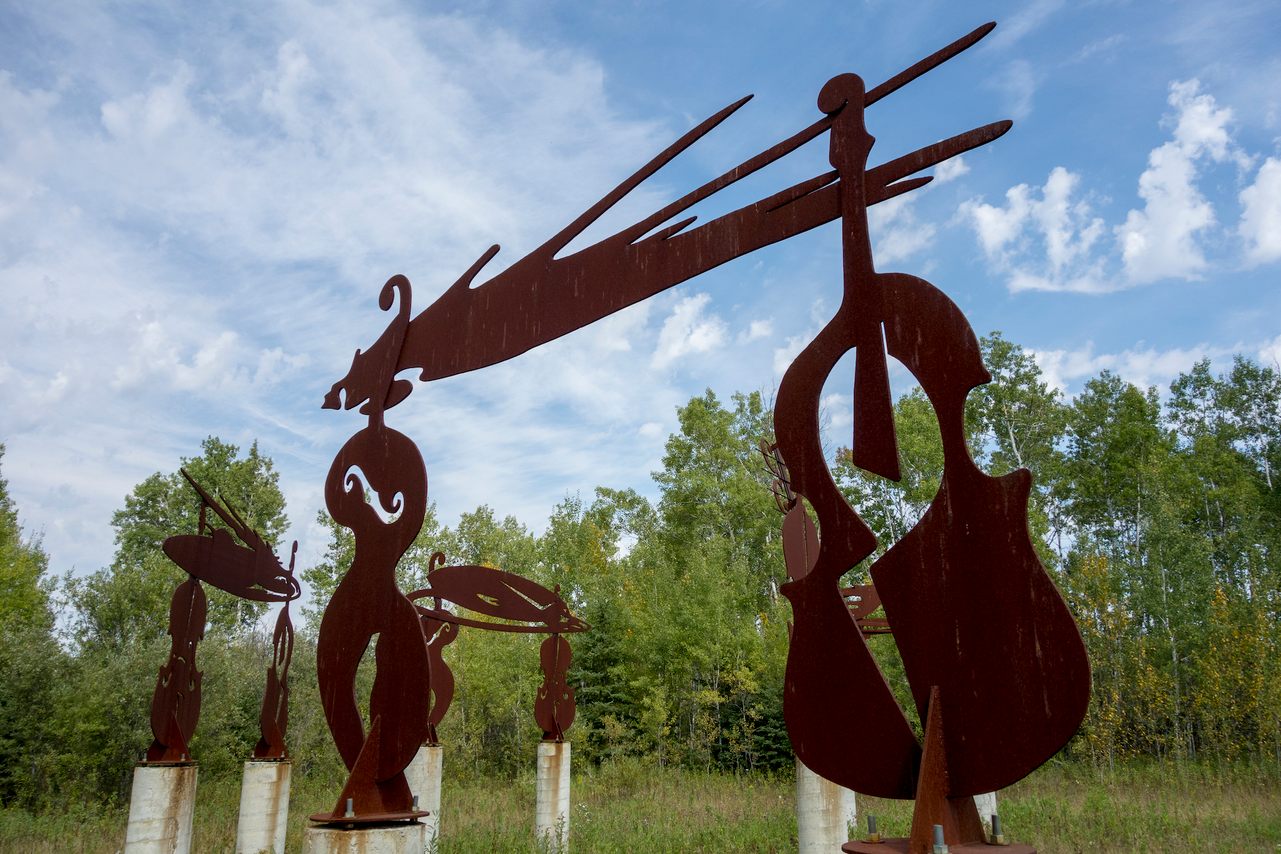
6. Basshenge
In 2001, Chicago Symphony double bassist Joseph Guastafeste collaborated with artists to create this monument to the double bass off of Highway 11. Viewed from above, the spiral of sculptures even forms a bass clef. There are 21 basses in total, and pairs of basses around the outside circle are connected by metal crosspieces that represent virtues such as patience, love, and brotherhood. (Read more.)
9832-9940, MN-11, Baudette, MN 56623
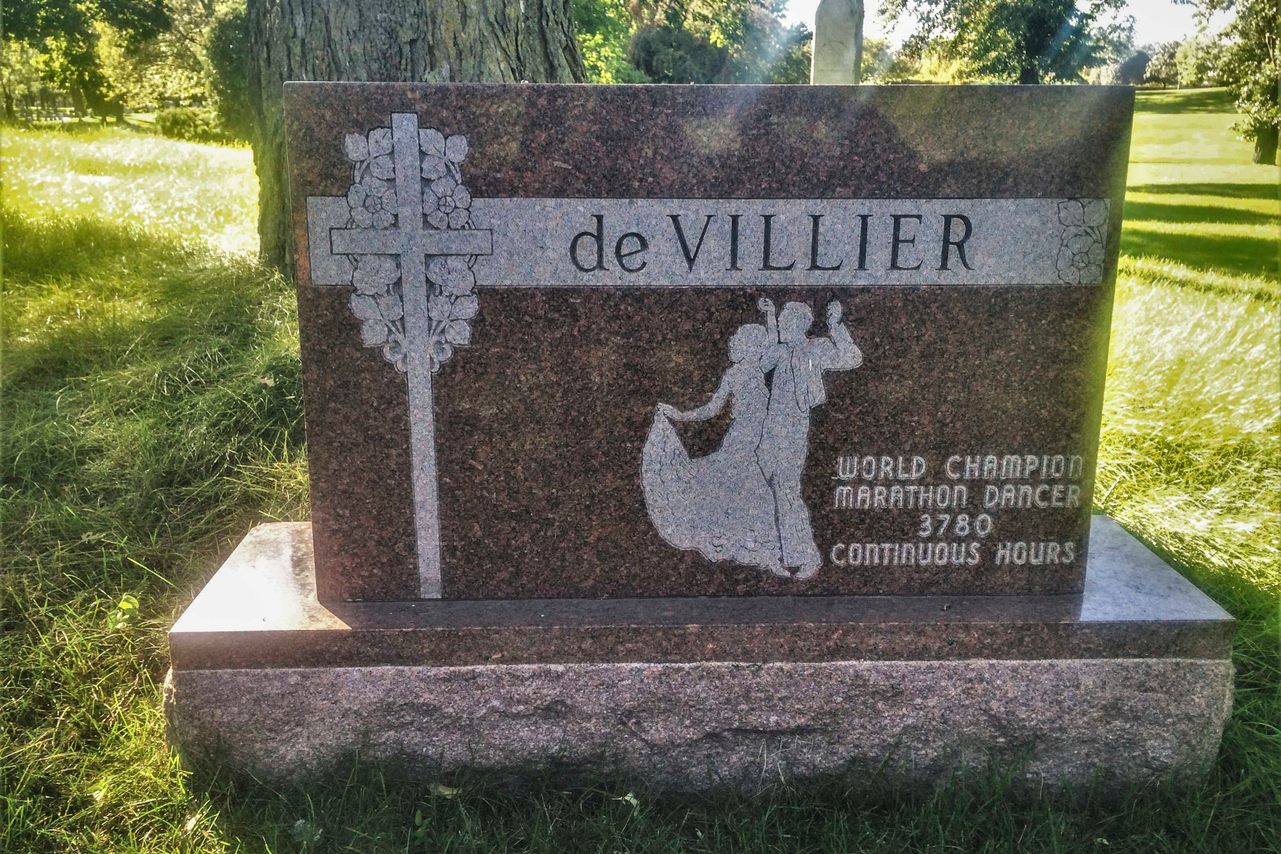
7. Grave of Callum DeVillier
Minneapolis’s Lakewood Cemetery is the eternal resting place for many of the city’s most well-known names, and among them is a lesser-known name with a surprising distinction: “DeVillier,” reads a pale red tombstone, “World Champion Marathon Dancer. 3780 Continuous Hours.” In June 1933, after dancing for over five months, Callum DeVillier and his partner, Vonnie Kuchinski, were the last contestants standing at a Massachusetts dance contest. During the Great Depression, dance marathons were an exploitative entertainment racket that dominated dance halls and auditoriums in towns and cities across the United States. (The reward for this five-month slog was $1,000.) The practice was eventually rebranded as a “walkathon,” presaging today’s common fundraising events. (Read more.)
3600 Hennepin Ave, Minneapolis, MN 55408
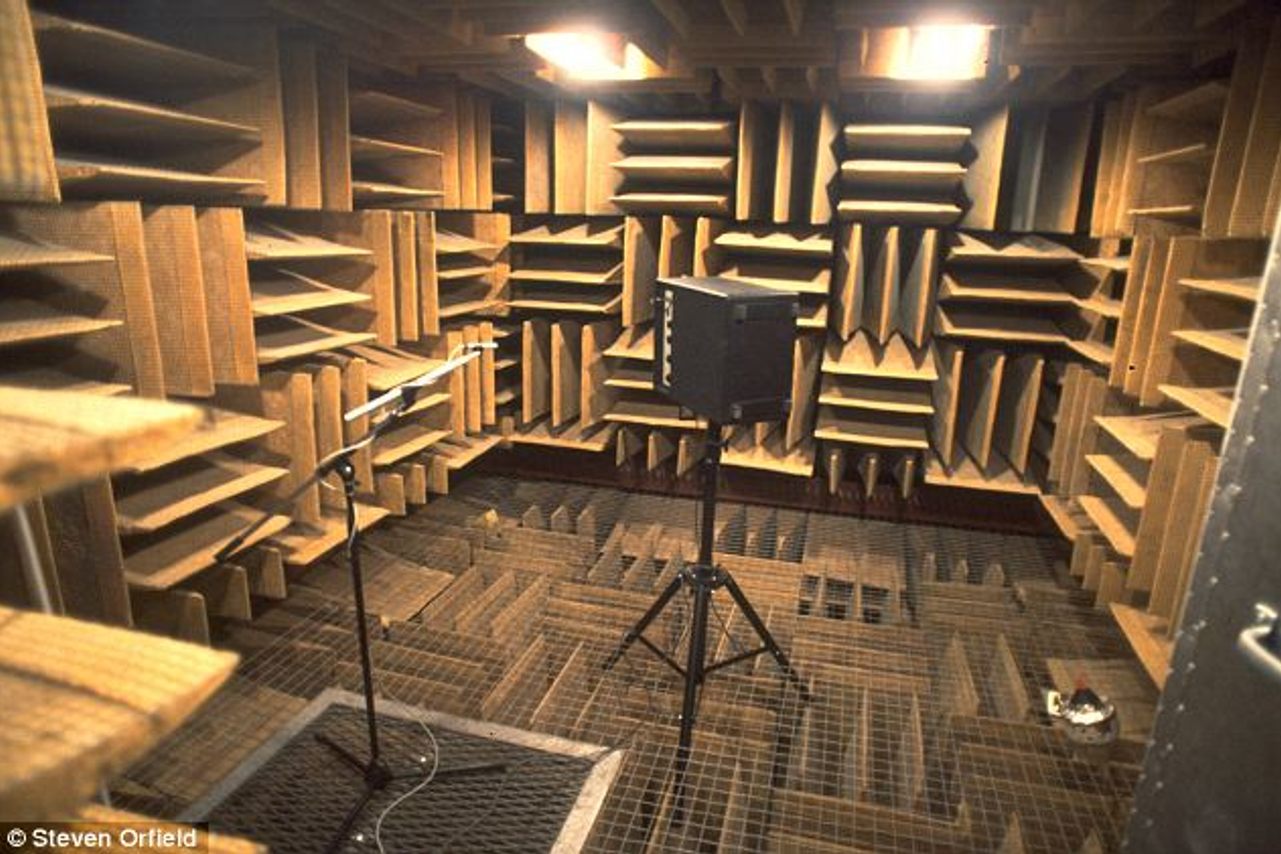
8. Orfield Labs Quiet Chamber
Orfield Laboratories in South Minneapolis is the home of a space that was once dubbed “the quietest place on Earth” by Guinness World Records. (As of 2015, that title now belongs to a quiet room developed by Microsoft in Washington State.) The lab is called an anechoic chamber, meaning there is no echo, as the room absorbs 99.99 percent of sound. It is used by various manufacturers to test product volume and sound quality. A typical quiet bedroom at night measures about 30 decibels; this chamber measures -9 decibels. Members of the public must book a tour to visit the room, and are only allowed in for a short, supervised stay. It's said that longer stays in the room can drive people a little batty. (Read more.)
2709 E 25th St, Minneapolis, MN 55406

4 Underwater Wonders of Florida
You probably know that Florida is famous for its shorelines, from the shell-stacked beaches of Sanibel Island to the music-soaked swaths of Miami. But many of the Sunshine State’s coolest attractions rarely see the light of day—they’re fully underwater. Here are some of the state’s strangest and most spectacular sites, beyond the beach, and below the surface.
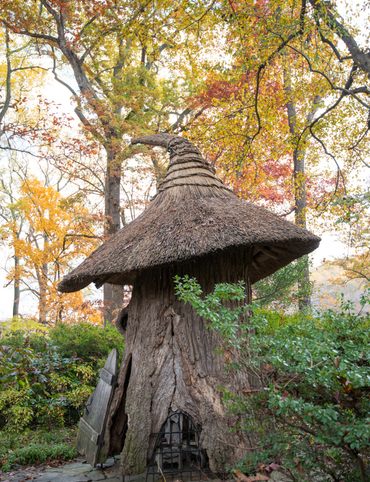
6 Spots Where the World Comes to Delaware
Students of American history will know that Delaware is noteworthy for being the first state to ratify the Constitution of the United States, earning it the nickname “The First State.” But look beyond Delaware’s American roots, and you’ll find other cultural influences, tucked away where only the most enterprising of explorers will find them. From a Versailles-inspired palace to an English poet casually lounging in a garden, here are six places to help you travel the world without ever leaving the state.
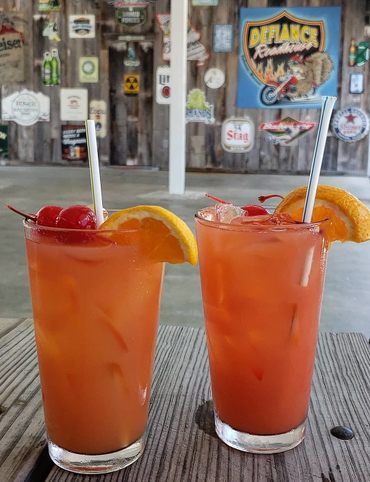
6 Wondrous Places to Get Tipsy in Missouri
Celebration or desperation aside, these six spots in Missouri are proof that imbibing is only half the fun of bar culture. From a mountaintop drive-through golf-cart bar to the state's oldest waterhole hole—nestled more than 50 feet underground in a limestone cellar—the “Show-Me State” has no shortage of boozy fun to show you (as long as you're 21+, of course).

4 Pop-Culture Marvels in Iowa
Iowa is the pantry of America, giving over the vast majority of its land to agriculture and producing more corn and pork than any other state. But the state has also proven fertile ground for pop culture, as well. The landscape has inspired movies, films, songs, paintings, and novels while spawning movie royalty in the form of a certain Duke. Bask in the wonderful corniness of these four pop-culture touchstones in the Hawkeye State.

7 Stone Spectacles in Georgia
At the heart of every peach rests its stone center, or pit. So perhaps it’s fitting that Georgia, the Peach State, holds a wealth of stone-based treasures of a different sort. In Walker County, a labyrinth of limestone passages leads to the deepest cave drop in the continental United States. In Calhoun, a rock garden of spectacular sculptures hides behind a church. And in Savannah, two gravestones appear on an airport runway. Whether carved by hand or nature, these stone wonders truly rock.

6 Stone-Cold Stunners in Idaho
It turns out that no one really knows how Idaho got its name. It's been thought that the name came from Shoshone, but in truth it may have just been made up by a somewhat shady politician. Regardless of what you call it, the Gem State is sparsely populated and unapologetically wild, and full of wonders—especially geological ones.
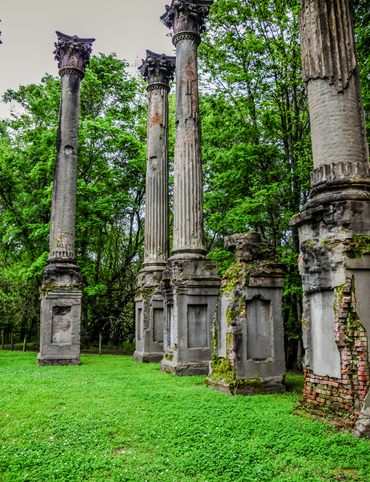
8 Historic Spots to Stop Along Mississippi's Most Famous River
The Magnolia State is also famous, of course, for being one of the locales ribboned by the squiggly Mississippi River, which stretches more than 2,300 miles from Minnesota to Louisiana. Combined with the Missouri River, one of its tributaries, the Mississippi is the fourth-longest river in the world, trailing the Nile, Amazon, and Yangtze. The river is well worth a visit—and if you’re roaming the state that shares its name and want to hug fairly close to the shore, here are eight places to pop in along the way.
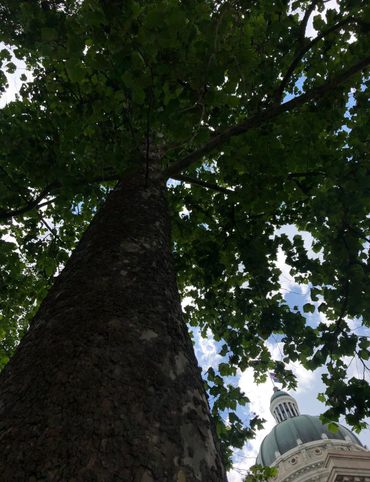
5 Incredible Trees You Can Find Only in Indiana
Once upon a time, the forests of Indiana were endless. Or that was how it seemed in the 19th century, when the state produced more lumber than anywhere else in the nation. The valuable trees went first, such as black walnut and white oak. The scrubby leftovers were often burned to create farmland. At the start of European settlement, 90 percent of what is now Indiana was forest. That number plummeted to a measly 6 percent by 1922. While the forests have significantly recovered, there are still only about 2,000 acres of old-growth forest left in the state. Yet trees hold a hallowed place here. One town has graciously allowed a tree to grow on its courthouse roof for more than a hundred years. In many graveyards, markers are fashioned to look like stumps and branches. Read on for five woody wonders of Indiana, all rooted deeply in their communities.
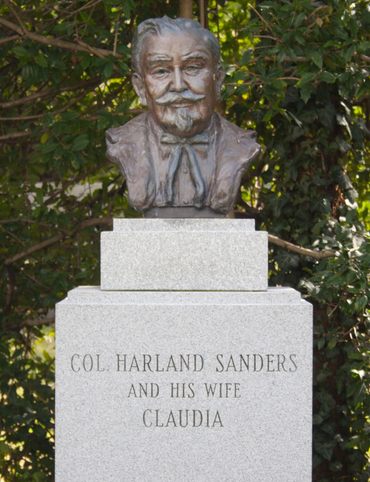
5 Famous and Delightfully Obscure Folks Buried in Kentucky
When the Grim Reaper visits, it doesn't discriminate. The cemeteries of the Bluegrass State are home to a cast of characters that includes famous folks, as well as others whose faces you know, but whose names you might not recognize. Visitors can pay their respects to a fast-food icon, a world-famous athlete, comedic actor, and a local magician, as well as a folk hero who may or may not be buried there at all.

4 Wacky Wooden Buildings in Wyoming
Picture Wyoming during its Wild West days. Once your mind wanders across the epic landscapes and into town, the mythic scene you might imagine—the saloon, the general store, the bank—will likely consist of wooden structures, ones thrown hastily up as settlers headed west in search of mining wealth, land, and work on the expanding railways. As it became the stuff of legend, accounts of the Wild West turned into tall tales, often conveniently overlooking the scale of the violent displacement of Native Americans. But as the period’s impact on the West is very real, it’s no surprise that the most unusual structures in Wyoming are wooden buildings that date from the frontier era or hearken back to it.
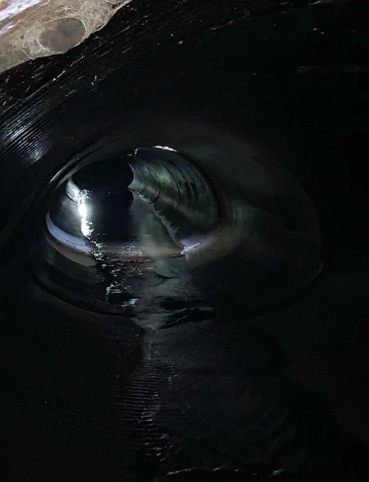
7 Spots to Explore New Jersey’s Horrors, Hauntings, and Hoaxes
In New Jersey, it can be difficult to separate fact from fiction. In 1909, newspapers published accounts of a monster known as the “Jersey Devil” said to be prowling the Pine Barrens. In 1938, a radio broadcast declared that aliens were invading the small community of Grover’s Mill. And today, streets and signs suggest ominous origins with names like Ghost Lake and Shades of Death Road. If you know where to look, the Garden State offers stories far stranger than any Springsteen song or scene from The Sopranos. Here are seven sites to explore the hauntings, horrors, and supernatural phenomena of New Jersey.
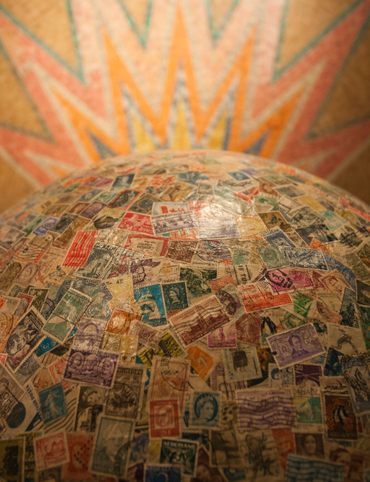
4 Out-There Exhibits Found Only in Nebraska
Nebraska is affectionately known as the Cornhusker State or the Wheat State, but this particular swath of Big Sky Country could also be called “The Land of Very Cool Collections.” From monuments to powdered beverages to love letters to roller skates, here are four exhibits worth a visit.

6 Sweet and Savory Snacks Concocted in Utah
More than half of Utah’s population is Mormon, which translates to more than 1.5 million citizens who eschew coffee, alcohol, and cigarettes. Sugar, however, is not restricted. This may explain why the state’s candy-eating rate is twice the national average: Everyone needs a vice. Or perhaps it’s that Mormons’ proclivity for large families skews the demographics in favor of sweets and starches—more kids equals more unbridled sugar fiends.Couple the state's bounty of confectionary with its proximity to Idaho, and you've got a wealth of potato-based treats to contend with, as well. In some cases, potatoes and dessert become one. Our advice? Don't knock it until you try it.

12 Places in Massachusetts Where Literature Comes to Life
Massachusetts is a lit-lover's paradise. From landscapes that have moved writers to wax poetic about beans to story-inspired sculpture parks and shops stacked with volumes new and old, the Bay State would also be aptly named the Book State. Here are 12 places to celebrate writers or the places that inspired them.
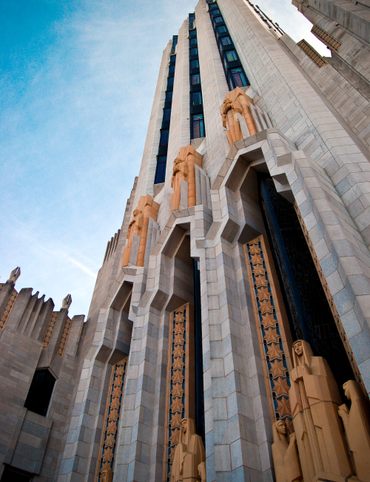
8 Buildings That Prove Oklahoma's an Eclectic Art Paradise
In the 1920s, a number of oil reservoirs were discovered in Oklahoma, and the promise of riches led to a population boom. Would-be oil barons moved in from the coasts, bringing with them the most popular style of the moment, Art Deco. Much of that architecture still stands today, alongside institutions that honor the state’s earlier history and its modern culture. Though many people know Oklahoma better for its oil fields and cattle ranches, the state also has a rich history of innovative art and architecture. From elaborate family estates to experimental art collectives, these are a few of the unique creative spaces that await in Oklahoma.
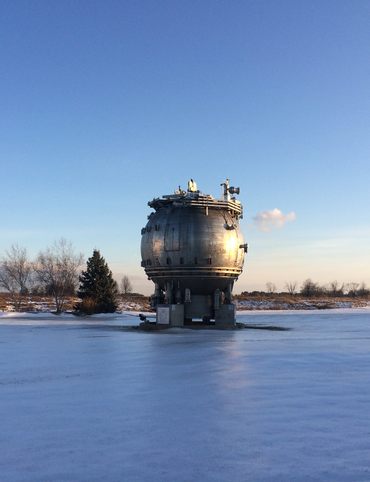
9 Stunning Scientific Sites in Illinois
When you think about Illinois, what are the first things that come to mind? Maybe it's the environment, with its vast prairies and cold winters. Maybe it's someone from the state, like Abraham Lincoln, or something, like Chicago-style hot dogs or deep dish pizza. What you might not realize, though, is that there's a lot of fascinating science happening in Illinois. (There was even a settlement named Science along the Illinois River in the early 19th century.) From some of the world's most powerful computers and particle-smashers to horological oddities, these are a few of the laboratories and collections that the 21st state has to offer.
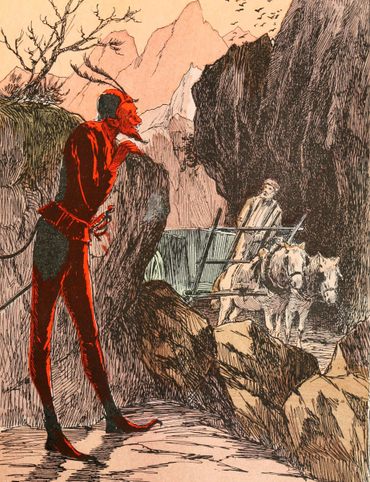
5 Strange and Satanic Spots in New Hampshire
What is it with New Hampshire and the Devil? Since the time of European settlement, Satan seems to have lurked around every corner of the Granite State. In the era of witch hunts, terrified townspeople accused their elderly neighbors of speaking with the Devil, and local lore has it that the stones around a frothing waterfall in the woods once served as Satan's kitchen, where he cooked a pot of beans with the flames of Hell. Perhaps the Devil got his best turn in “The Devil and Daniel Webster,” a 1936 short story by Stephen Vincent Benét. The story features real-life lawyer and politician Daniel Webster fighting for the soul of a down-on-his-luck New Hampshire farmer who, in a moment of desperation, made a deal with the Devil. In the tale, the Devil uses every legal and supernatural means possible to outwit Webster, who battles to spare New Hampshire from further demonic meddling. “Any Hades we want to raise in this state, we can raise ourselves, without assistance from strangers,” Webster remarks. But for those who still do want to raise a little hell, New Hampshire has plenty of spots for devil-dealing.
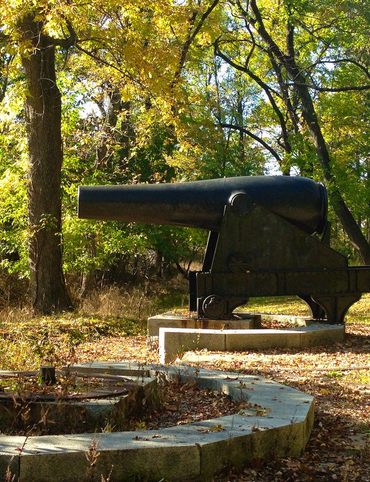
8 Historic Military Relics in Maryland
Maryland has the distinction of being one of the first states to officially join the Union in 1788—and as such, it’s played both big and small roles in various battles across the nation's history. Here are eight nods to its military past, ranging from a furnace that produced George Washington’s cannonballs to an unusual museum dedicated to the U.S.'s cryptographic history.
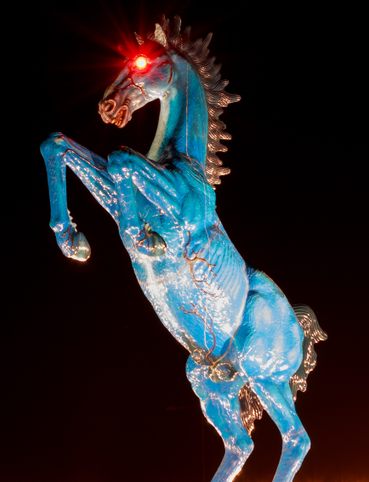
5 of Colorado's Least-Natural Wonders
The state of Colorado is a gold mine of natural beauty: It's famous for its picturesque deserts, dramatic canyons, and shimmering, snow-capped peaks. But the Centennial State also deserves some love for its many unnatural wonders. There's a psychedelic church, a 231-pound sticker ball, and a cryogenic mausoleum. And who can forget the blue horse with neon-red eyes that towers outside the Denver airport? If you're looking to skip the ski slopes and hiking trails in favor of Colorado's strangest sights and most curious creations, this is where to start.

6 Hallowed Grounds in South Carolina
South Carolina is known for its picturesque coastal cities and Southern charm. Given its firm placement in the Bible Belt, the Palmetto State is home to many churches—but it also holds fascinating ruins of houses of worship, wondrous works of art inspired by African traditions, and historic holy grounds hiding in plain sight.
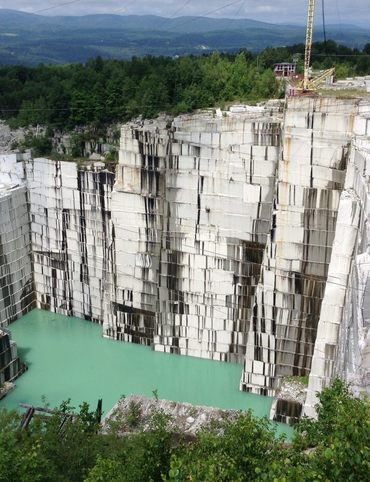
9 Rocking Places in Vermont
Vermont may be known for its maple syrup and homey coziness, but beneath that rustic veneer lies a solid history of mineral industry. Here's a history of the Green Mountain State from the ground up.
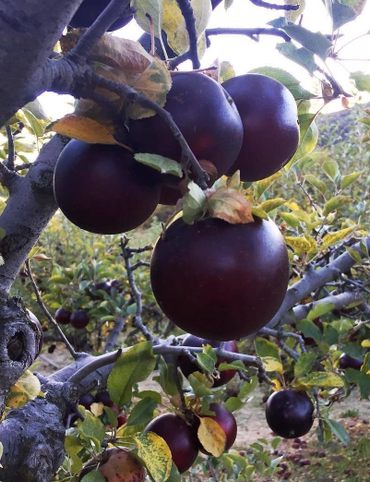
Black Apples and 6 Other Southern Specialties Thriving in Arkansas
Climate, globalization, trends, employment rates, lobbying—it all influences what we eat. As time marches ever-onward, recipes are forgotten, traditions fade into quiet obscurity, and institutions are abandoned. But some entities that seem slated for cultural demolition are kept alive in Arkansas. From brewing beer using the spring water of a once-infamous bathhouse to serving historic Appalachian home-cooking hot off of diner skillets, these seven Arkansan spots savor and celebrate relics of regional heritage.
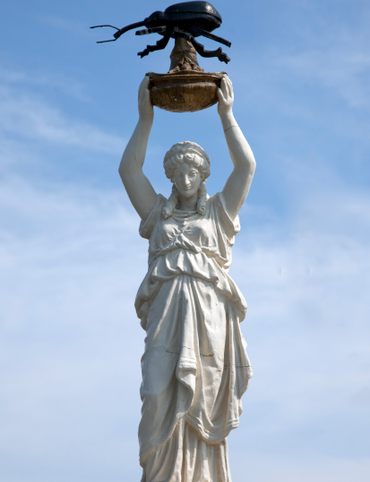
4 Monuments to Alabama’s Beloved Animals
Maybe you love your cat a lot—maybe even enough to commission a little painting of your furry companion. But the people of Alabama can do you one better. Here, you’ll find a whole cemetery devoted to hounds, a heartfelt memorial to a fish, even a statue of a pest that drove farmers batty before it also spurred them toward ingenuity. Alabama knows how to fete Fido, as well as his scuttling, swimming, and spacefaring compatriots.

The Dark History of West Virginia in 9 Sites
The Rockies may be bigger, but there's something special—and sometimes spooky—about the Appalachians. With dense forest cover, long history, and the shadowy hollows ("hollers," locally), they seem at times to be full of secrets. In West Virginia, the mountains and hills hold tales and myths, and a lot of places that were used and then abandoned. If you get excited about the feel of a shiver down your spine, you'll find a lot to love.
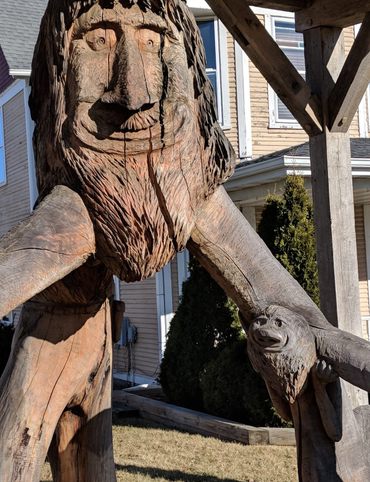
11 Zany Collections That Prove Wisconsin's Quirkiness
Pick an object. It could be a bottle of mustard. Or a life-size troll sculpture. Or a metal sculpture with big Victorian-steampunk energy. It doesn't really matter, as long as you collect or create so many of them that your collection becomes a roadside attraction and a cherished local landmark. A remarkable number of Wisconsinites have chosen this life path, and the result is a truly remarkable collection of collections scattered across the state.
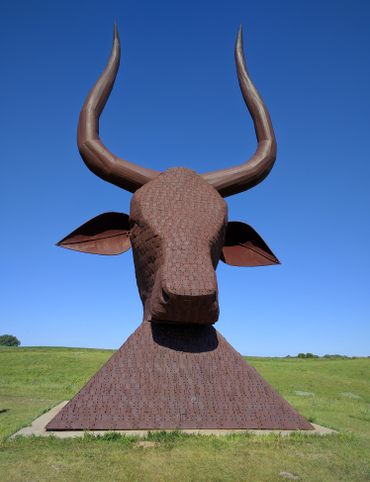
7 Inexplicably Huge Animals in South Dakota
One of the great resources of the Mount Rushmore State is millions and millions of years old: fossils. The state has long had pride of place in the paleontology world for the dinosaurs and mammoths that have been excavated there. And that history seems to have provided inspiration for the state's menagerie of massive megafauna. Here are some of our favorite places that celebrate dinosaurs, huge animal art installations, mammoths, and ... a prairie dog?
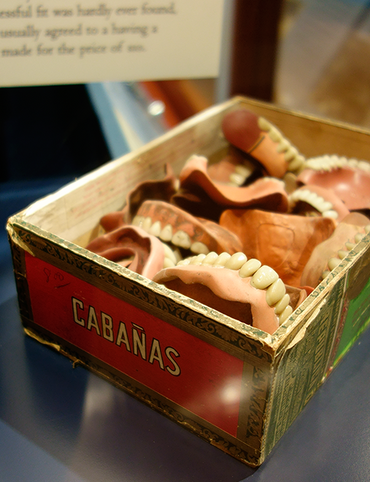
6 Fascinating Medical Marvels in Pennsylvania
In the 1700s and 1800s, Philadelphia was the center of medical scholarship in the United States. The city not only attracted the brightest minds, but also the most curious cases and characters. From the oldest quarantine facility in the country to a museum that memorializes a traveling dental circus, here are six places to marvel at the trials, errors, and triumphs of medical history in Pennsylvania.

8 Places in Virginia That Aren’t What They Seem
They say that Virginia is for lovers. If you love a little mystery, then they’re definitely right. With its mountain ranges, deep forests, and proximity to the nation’s capital, the state is filled with unusual corners and overlapping histories. From a Cold War bunker turned recording archive to a Styrofoam Stonehenge, these places in Virginia are more than meets the eye.
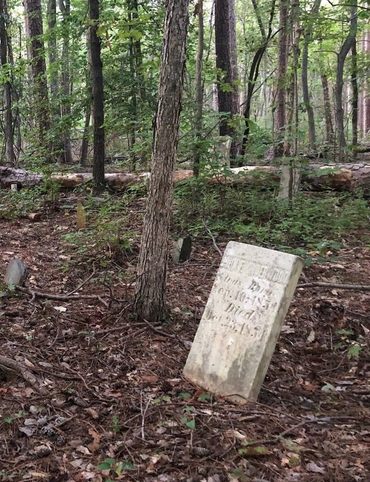
7 Cool, Creepy, and Unusual Graves Found in North Carolina
Every state in the union has graves, and their share of unusual burials or cemeteries, but there's something about the Tarheel State's final resting places that carry a sense of history and mystery, from long-forgotten graveyards, to eternal resting places for conjoined twins, to a politician that had himself buried inside a giant boulder.
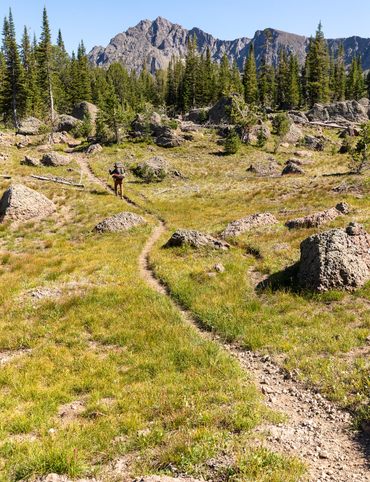
7 of Montana's Spellbinding Stone Structures
The Continental Divide runs through Montana, separating the mountains and glaciers on the west from rolling plains to the east. Much of the state is built on a bed of rock that dates back more than a billion years, to the Precambrian, or the earliest era in Earth’s history. The geology of Montana has shaped the state, from the mountain ranges to that draw hikers to Glacier and Yellowstone National Parks to mineral deposits that drew prospectors during the Gold Rush to the vast plains that have long supported hunting and agriculture.
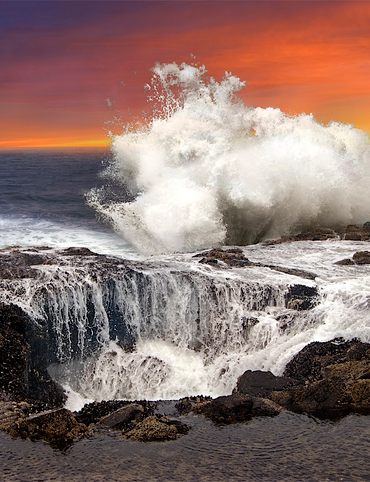
9 of Oregon’s Most Fascinating Holes and Hollows
Along with the rest of the Pacific Northwest, Oregon has been shaped by volcanic activity. Active volcanoes, Mount Hood among them, dominate the skyline, and the city of Portland was built atop an extinct volcano. Over tens of thousands of years, these geological hotspots have left many holes in their wakes, including deep craters, narrow canyons, and subterranean lava tubes. Here are a few of the most intriguing voids that Oregon has to offer.

Take to the Skies With These 9 Gravity-Defying Sites in Ohio
Sure, Kitty Hawk, North Carolina, got headlines, but the Wright Brothers were Ohioans through and through. That's where they had their print and cycle shop, and established the world's first airplane factory. From Dayton's Aviation Heritage National Historical Park, to NASA's Glenn Research Center, to Congress officially declaring Ohio the “birthplace of aviation,” and much more, no other state takes to the skies and beyond like the home of the Buckeyes. Here are some of our favorite places to feel the wind beneath your wings.
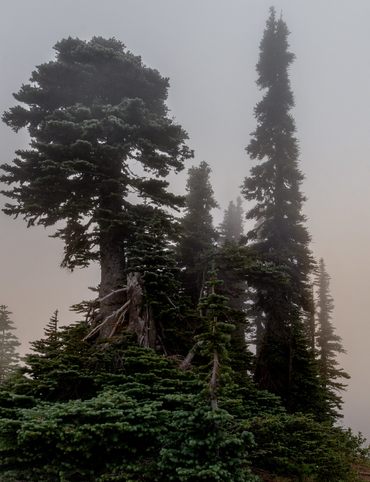
9 Strange and Surreal Spots in Washington State
The deep, moody forests of Washington state are filled with secrets and stories. From springy mosses to towering Douglas firs, rocky outcrops, and glacial deposits, it’s easy to see how the landscape helped set the tone for stories like David Lynch’s trippy TV series Twin Peaks and the teen vampire romance that is Twilight. Across the Evergreen State, human- and nature-made oddities are rarely far from reach.
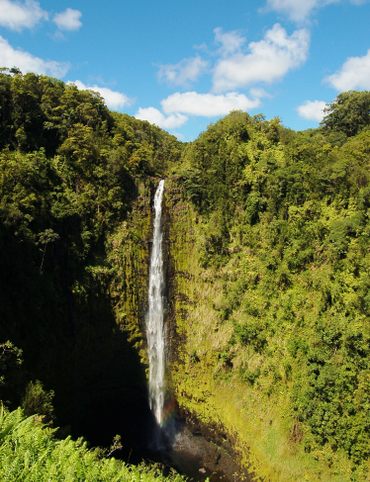
8 Watery Wonders in Hawaiʻi, Without Setting Foot in the Ocean
Yes, we know, Hawaiʻi is surrounded by water—the state is a watery wonder in and of itself. But the ocean is only the beginning. The volcanic islands' dramatic topography, unpredictable coastlines, and high rainfall mean that water in and around the Paradise of the Pacific cavorts in all sorts of stunning ways: waterfalls, blowholes, pools, and more. (Plus rainbows. Lots and lots of rainbows.) And you can enjoy all of these natural showstoppers without having to get your feet wet.
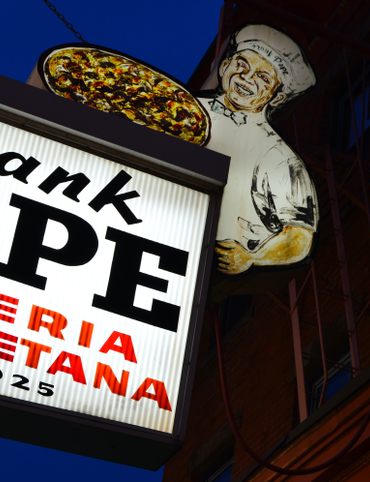
6 Unusual Eats Curiously Cooked Up in Connecticut
For superb pizza, most people look to New York. Excellent burgers are available in every one of the 50 states. But where can you find hamburger recipes caught in the early 20th-century, cooked in steamers or served on toast with absolutely no ketchup allowed? Or, for that matter, fancy cheese made by trailblazing nuns who launched their dairying business at a time when Velveeta was still the norm? Connecticut may be an odd place to designate as a culinary cradle, but the state contains everything from the last of a generation of feminist vegetarian restaurants to what the Library of Congress dubs the very first place to have served up a hamburger. Unique culinary institutions cropped up in every corner of the state. Some have survived, while others have fallen by the wayside (R.I.P. to the Frisbie Pie Company). Here are six remarkable gastronomic institutions in a place that has proved to be fertile ground for unusual eats.

11 Close Encounters With Aliens and Explosions in New Mexico
In the arid and remote expanses of New Mexico's landscape, booms and zooms abound. From the volatile effects of the Manhattan Project to the otherworldly possibilities of Roswell's UFO, the Land of Enchantment has never shied away from the controversial or far-reaching. Here are several places to encounter those legacies across this southwestern state.

10 Places to Trip Way Out in Kansas
The Sunflower State has a reputation for being flat—in fact, scientists have shown that it is objectively way flatter than a pancake. Far from being featureless, though, Kansas can be mind-bending in its own weird way. Maybe it all started with The Wizard of Oz. From a missile silo that once dominated the world's LSD supply to rock formations shaped like mushrooms, roadside art that will make you think you've been whisked away by a tornado, and a giant pile of sock monkeys, Kansas is full of treasures that are sure to make you do a double take.
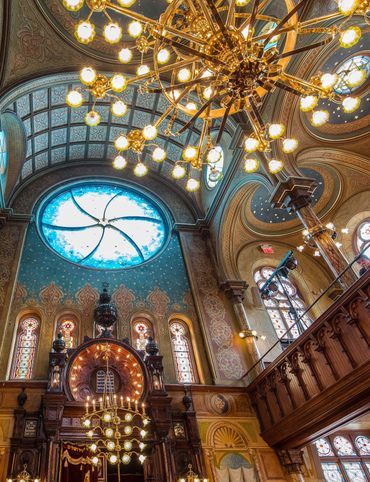
The Resilience of New York in 10 Remarkable Sites
New York has been described as a playground for the rich and powerful, but the state's history is full of ordinary people who have overcome extraordinary struggles. What if Seneca Falls, the village that launched the fight for women's suffrage, were as famous as Niagara Falls? What if Weeksville, the historic free Black community in Brooklyn, were as well-known as Williamsburg? From immigrant sanctuaries to the Survivor Tree, here are sites where New York has shown its resilience.

7 Very Tall Things in Very Flat North Dakota
North Dakota is not quite the flattest state in the U.S., but it's pretty close. (In one analysis, it placed third, after Illinois and Florida.) During the last Ice Age, glaciers moving across the terrain had a planing effect on the land, dropping sediment that filled in any valleys, creating sprawling prairies and open, big skies. These large expanses are home to more than a few sky-high structures, both natural and human-made. From rocky peaks and multi-ton animal statues to one of the tallest buildings in the world, these are some of the most impressive structures that North Dakota has to offer.
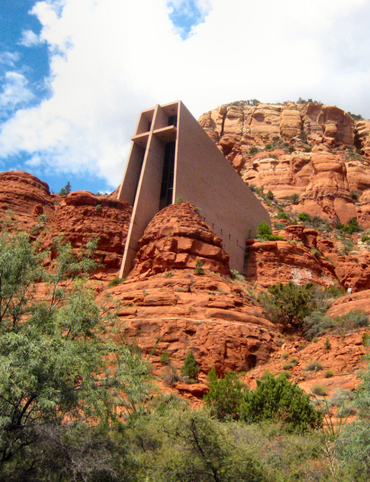
8 Blissfully Shady Spots to Escape the Arizona Sun
For about half of any given year, much of Arizona is too hot to handle. But even in peak summer, the state is home to a stunning spread of geographic diversity and a mysterious magic that emanates from the landscape—and we don’t just mean the mirages. Locals and visitors alike flock to higher altitudes, recreation-friendly bodies of water, and indoor spaces that are so heavily air-conditioned they practically require a jacket. Here are eight sheltered spots to retreat from the heat, from natural formations to an immersive art exhibit that invites lingering. We've even added a couple cool places (220 feet underground or a mile above sea level) to dream about spending the night.

9 Surprisingly Ancient Marvels in Modern California
Long before California was home to tech campuses, freeways, and palm trees, Native inhabitants etched huge designs into the landscape. Even before that, at roughly the same time that the Pyramids of Giza were under construction, a tree that still survives today began taking root. And even farther into the past, glaciers and mammoths created enduring monuments to antiquity. Across the state, the distant past is still within easy reach.
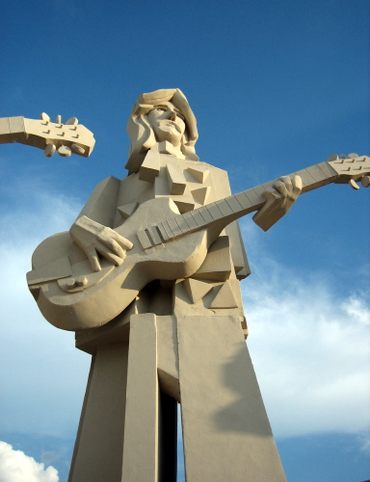
10 Art Installations That Prove Everything's Bigger in Texas
There’s a time-tested saying about things being large in Texas—and it certainly holds true for the state’s artworks, many of which are so huge or sprawling they could only reasonably live outdoors. Across the vast expanse of the Lone Star State are artistic testaments to some of the area’s oddest characters and stories.

6 Huge Things in Tiny Rhode Island
The smallest state in America is often the butt of jokes. Rhode Island is neither a road nor an island, and it was once famously parodied in the now-defunct website “How Many Rhode Islands”—a simple tool that allowed you to see just how many Rhode Islands could squeeze inside a given country. The United States could contain 3,066 Rhode Islands, and Russia could hold 5,445. But the tiny state has a rather grand history. Rhode Island was founded on the principle of religious freedom, was the first of the Thirteen Colonies to renounce its allegiance to the British Crown, and was one of only two states not to ratify the 18th Amendment, which prohibited the manufacture and sale of alcohol. Many of the state’s attractions still loom large, including a 58-foot-long blue fiberglass termite and an improbably large blue bear slumped under a lampshade.

7 Underground Thrills Only Found in Tennessee
Famous for country music and hot chicken, Tennessee is also filled with natural wonders. Across the state, caverns beckon. Venturing into some of Tennessee's strangest subterranean haunts is a great way to experience the depths of the state's spell-binding charm.

Sink Into 7 of Louisiana's Swampiest Secrets
Louisiana has long had a complex relationship with the wet world. Chitimacha, Choctaw, and Atakapa peoples built communities among the knobby knees of bald cypress trees; French fur traders and pirates eventually made their own marks. Later still, modern engineers attempted to corral waters with levees and dams, or to reclaim land where there had been none. Across the 50,000-odd square miles that make up the state, troves of special places are becoming concealed by rising water. Here are seven places water has revealed or covered up.

7 Mechanical Marvels in Michigan
Michigan is famous for its steep, sweeping sand dunes, freckling of lakes, and unique fossils—but across the state, you'll find slews of automated wonders, past and present. From old animatronic toys to the ruins of early assembly lines, here are seven places to be dazzled by industry.

11 Wholesome Spots in Nevada
Here at Atlas Obscura, we have a fondness for the forbidden, a hunger for the hidden, a gusto for the grim. (You get the point.) But it wouldn’t be so intrepid to simply highlight Nevada’s underbelly, would it? There’s more to the state than extraterrestrial-themed brothels and nuclear bomb test sites. Kids and grandparents might enjoy enormous Ferris wheels, unusual geysers, or pristine parklands. Even Nevada—home to Sin City—has a family-friendly side.
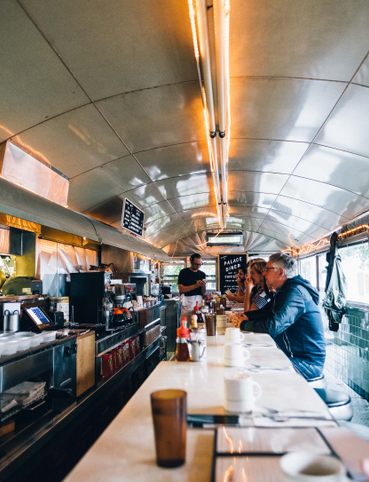
7 Places to Glimpse Maine's Rich Railroad History
Maine is widely known for its mottled red crustaceans and stony-faced lighthouses, as well as bucolic towns and the top-notch hiking outside of them. But before all that, Maine was all about one thing: trains. As America industrialized in the 19th century, there was an insatiable demand to build and a hunger for lumber. Maine had plenty of it, and the state’s rivers became swollen with the fallen bodies of pine and spruce, much of which was hauled by rail. Trains did the heavy lifting to coastal hubs including Bangor and Ellsworth, and by 1924, there was enough railroad mileage in Maine to get from London’s King's Cross station to Mosul, Iraq. Over the years, some of the old cars were fashioned into eateries, but many were simply abandoned in the woods. Now, relics of Maine’s railroad history are scattered in museums, restaurants, and more.
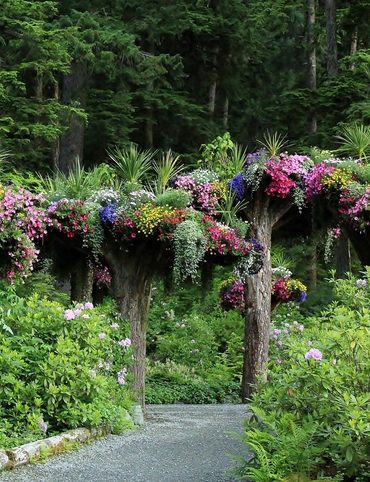
11 Places Where Alaska Bursts Into Color
Picture Alaska. You might see in your mind's eye the granite and stark white snowcaps of Denali National Park, or the dark seas that surround 6,000-plus miles of coastline, or the muted olive of its tundra in the summer. But as anyone who's been there knows, the country's largest, most sparsely populated state can absolutely burst with color, from the luminous green of the Northern Lights, to the deep aqua of its glaciers, to the flourish of wildflowers fed by its long summer days. Here are some places to see the full spectrum of The Last Frontier.
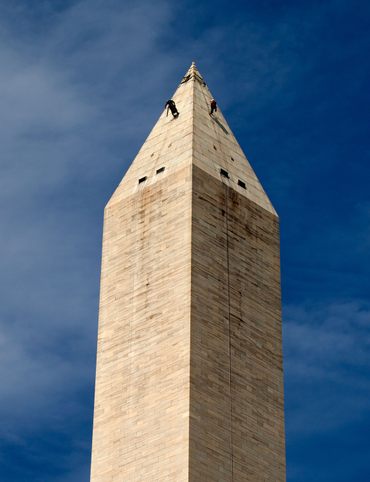
9 Places in D.C. That You're Probably Never Allowed to Go
The District of Columbia is home to a number of places that you need to flash the right ID to access. From restricted rooftops to government storage facilities and underground tunnels, the city is filled with places that are off-limits to the average visitor. What’s more, many of them are hidden within popular tourist destinations and densely populated neighborhoods—so you might catch a glimpse of them, but never get any closer. These are a few of our favorite restricted spots in D.C., and the stories behind them.

